It’s no secret to menswear enthusiasts that many of the clothing articles we wear have a military origin or sporting background–for example, the camouflage or “camo” print! As it looks utilitarian overall, we’ll discuss whether or not the camo print is compatible with the principles of classic menswear and if it can be brought into outfits that follow such guidelines.
More than a hundred years ago, the range of styles available to men was minimal. Military garments were more utilitarian versions of garments men already wore. In many cases, men could also purchase commissions in the military. So, your rank depended on your wealth, and these officers wanted to wear garments befitting their status.
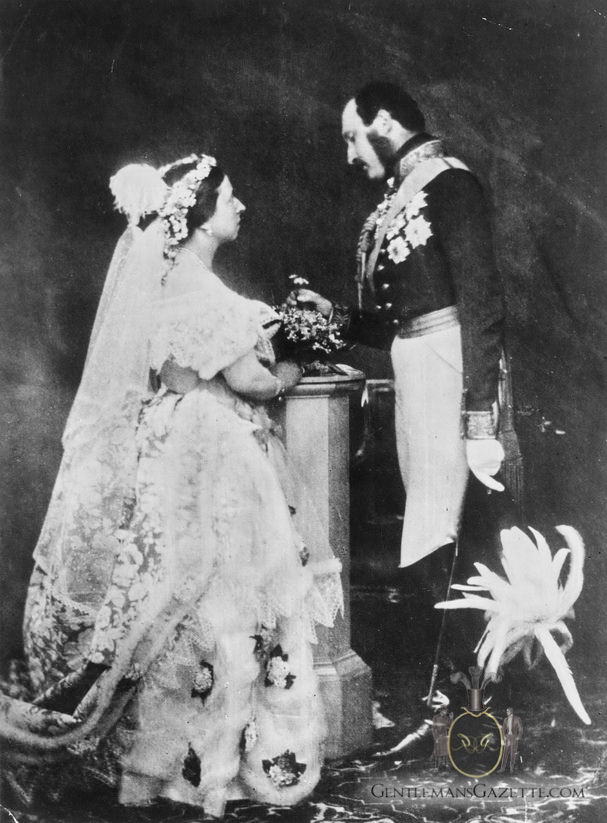
They also weren’t nearly as practical as more modern military uniforms. When they were folded into everyday wear for men, they didn’t stand out so heavily.
However, this leaves one well-hidden elephant in the room when discussing the topic of camo print. While this print serves a very utilitarian function for outdoorsmen and military personnel, you rarely see it in an office setting or in formal menswear.

That being said, tweed was originally a hunting fabric, which served as a type of early camo for hunters. Is it possible we could see this print become a new type of paisley within the world of menswear? Only time will tell.
The History of Camouflage
Revolutionary Period
While camo in its current form is a relatively new invention within the military, the concept behind it is not. Like the famed British infantries, some militaries stood out intentionally with their bright red coats as was intended to strike fear into their opponents by their sheer numbers and formations. However, it also made the troops a very obvious target.
This gave followers of guerilla warfare during the Revolutionary War a huge advantage. This might seem obvious now, but it wasn’t back then.

The US then opted for the less conspicuous blue uniforms for their troops to draw less attention to themselves for sneak attacks. While the British military was appalled by this and considered it a dirty trick and quite ungentlemanly, it was why the US won the Revolutionary War. As they say, “All is fair and love and war.”
This newfound military technique revolutionized the way wars were fought moving forward. In the Spanish-American War, US snipers took this a step further by smearing mud all over their blue uniforms to be less conspicuous. This led to the first primitive form of camouflage.
World Wars I & II
During WWI, the US also updated their war uniforms by having a khaki color in the summer and having an olive color, called “drab” in the winter on the field. These were designed to further help troops blend in with their surroundings and to make them less of an obvious target.
The introduction of trench warfare and planes had some of the units adopting uniforms that resembled the colors of trees and mud on their helmets for even less visibility. This was expanded upon in WWII and in the 1950s, where a twig and leaf pattern was adopted onto a common soldier’s helmet for a brief period of time but was later dropped.
The Vietnam War
The Vietnam War made stealth more important than ever. But, the US still opted for the drab uniforms of yesteryear. However, Green Berets and other special force units adopted an experimental uniform consisting of a four-color pattern known as “tiger stripe.” This was created to mimic the French and Vietnamese pattern and later saw more use due to its effectiveness.
With the failures of the Vietnam War and the looming fear of the Cold War with Russia escalating, the US was looking for a better way to protect its troops. This led to the invention of the “woodland” pattern consisting of black, brown, khaki, and green. This was designed to hide troops in forest and jungle environments.

The US adopted this new field uniform for all branches of the military moving forward. While there have been and will continue to be some alterations to this pattern, camo as we know it has been the standard for the Armed Forces and will continue to be for the foreseeable future.
Adopting Camo in The Modern Era
Throughout the 1980s and ’90s, this pattern has been mimicked within civilian clothing and has become quite a trendy look within fashion. It had variations that included blue, yellow, and even pinks. We all probably saw our uncles wear camo hats at least once!
Today, you can buy all sorts of shirts, shorts, pants, jackets, bags, shoes, and so on that use this motif. But, the question then arises: Is this compatible with a classic look? Should camo be worn, and is it stylish?
Do Camo and Classic Menswear Mix?
One of the first things you’ll notice about this pattern when it’s taken out of a more force and rural environment and brought into a more urban environment is that it’s extremely loud and attention-grabbing. Especially if it’s not in the traditional woodland print, this makes pairing this pattern extremely tricky as it’s not originally designed to be broken up and paired with other things.

Its bold shapes also force the eye onto it if you’re not surrounded by brown and green. This makes wearing solids with the print the easiest way to wear it without clashing patterns. It’s also an extremely casual print for its bold shapes and outdoorsman function.
For these reasons, we deem this to be quite difficult to pull off within dress apparel and the fundamentals of classic menswear outside of a more casual outfit.
Camo Style Tips: 1. Feature It On Your Accessories
If you’re a huge fan of the pattern and lean more fashion-forward with your ensembles, you could try to incorporate it by using an accessory like a pocket square or a tie. But, keep in mind, this is an unusual look and may not be for most people.
2. Wear It In Casual Settings
You could also wear it in a more casual setting outside of hunting, for example, board shorts or in swimwear in the summer if you’re a big fan of the print. This is where formality doesn’t really matter and allows you to have more fun experimenting. No one really cares what your swimming trunks look like.
Using it outside of these contexts will put you into the streetwear realm, which is not a bad thing, but it’s certainly something we’re not experts at here at the Gentleman’s Gazette.
3. Be Mindful of Any Military Insignias (& “Stolen Valor”)
Another element to consider with camo is wearing any military insignia with it, which you did not serve. Veterans take ranks and patches earned from military service very seriously and can take issue with you wearing something on a military garment if it’s not actually yours.

To prevent any issues with stolen valor, it’s better to be safe and go ahead and remove any insignias off the base garment if you’re going to wear it as a civilian.
4. Opt For A Military-Inspired Look
If you want to wear a more military-inspired look for a business casual setting, we’d suggest looking at olive drab designs as an alternative. This is because the color works extremely well with earth tones and will be far less loud and easier to pair with things like khaki pants.
A great place to start with this is the M-65 field jacket or parka and fatigue shirts. These designs have a strong and masculine military origin without screaming it. They also have a ton of pockets, which are a godsend.
Do Soldiers Dress Differently?
Outfit Ideas Featuring The Camo Print
I enjoy picking up camo-inspired items to add to my wardrobe, from shirts to even a travel bag. Here are a few casual outfits I wear that incorporate camo:
1. A camo short sleeve shirt with shorts and sneakers. A camo long-sleeved button-up shirt with cream jeans and green boots.
2. Chino khaki pants with a blue and white shirt and a camouflage bag.
3. Black workout shorts and a long-sleeved camouflage workout shirt with black running shoes.
Conclusion
While there are certain scenarios where you can wear this pattern if desired, we don’t anticipate it becoming a mainstay within classic menswear. But who knows? Maybe Timberlake was onto something after all.
Outfit Rundown
I’m wearing a long-sleeved buttoned-up camouflage shirt with cream jeans and green boots. I’m finishing off the look with the Fort Belvedere belt and socks. And, of course, you can always find socks like these and other great accessories at the Fort Belvedere shop.
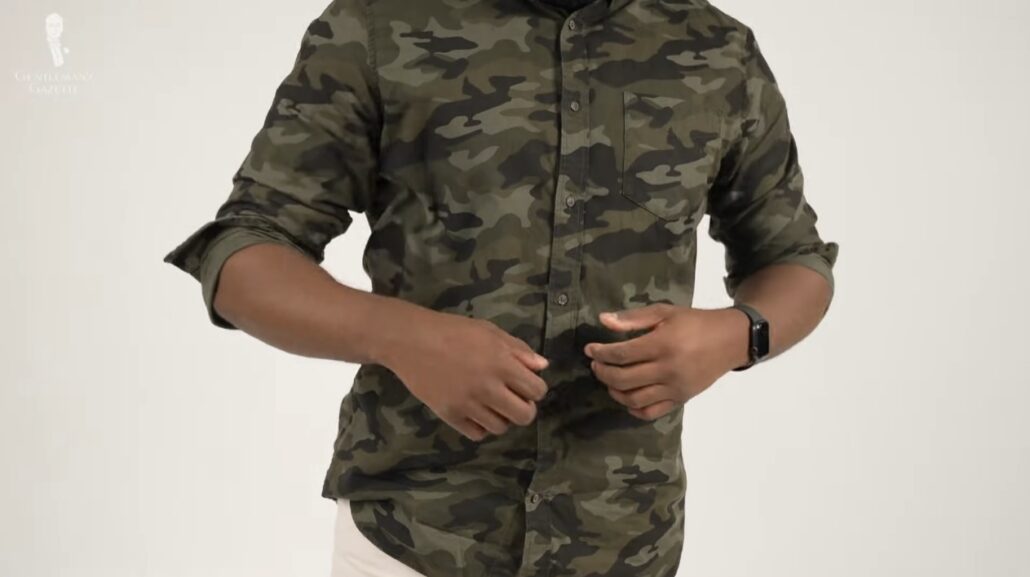
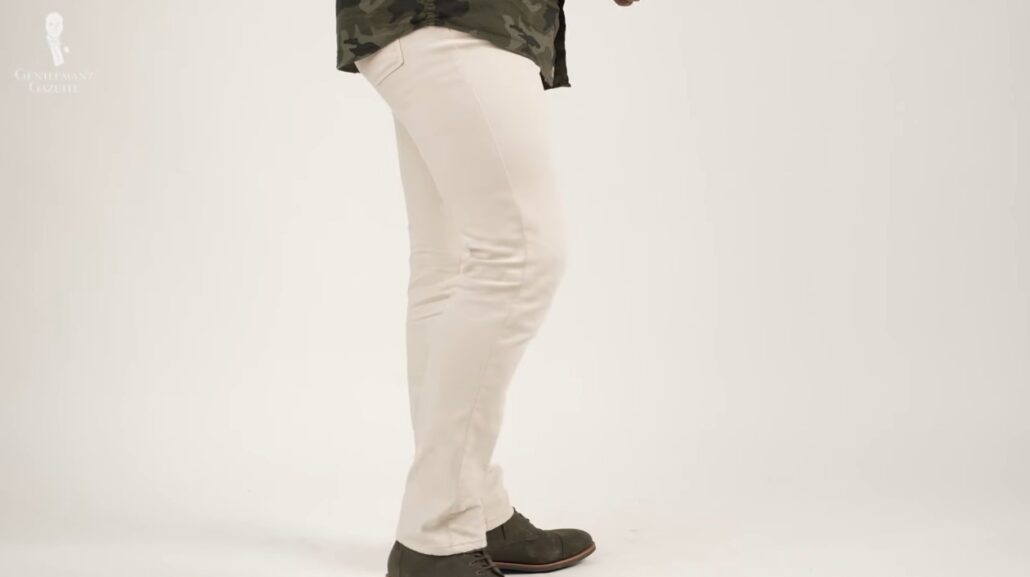
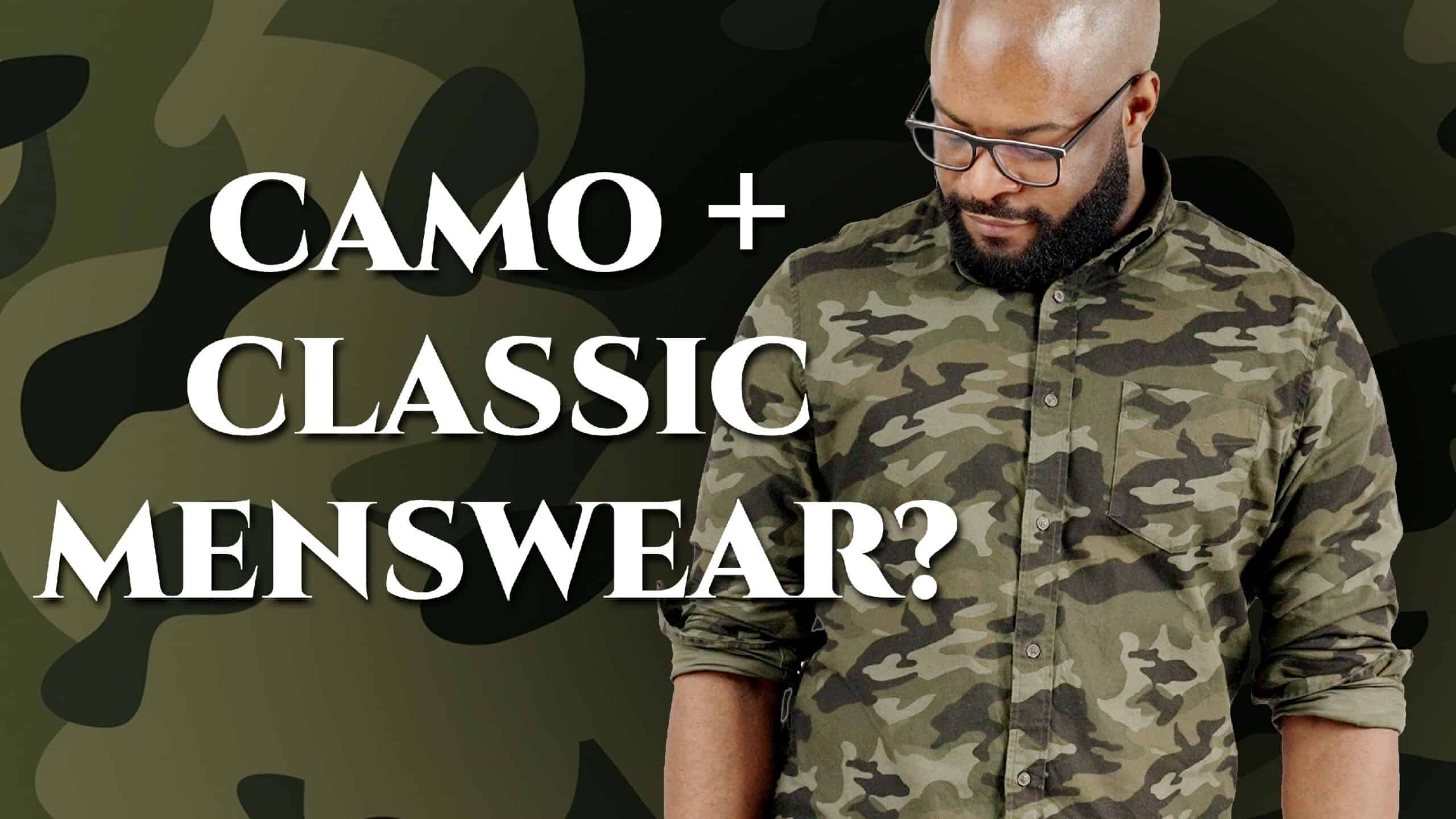





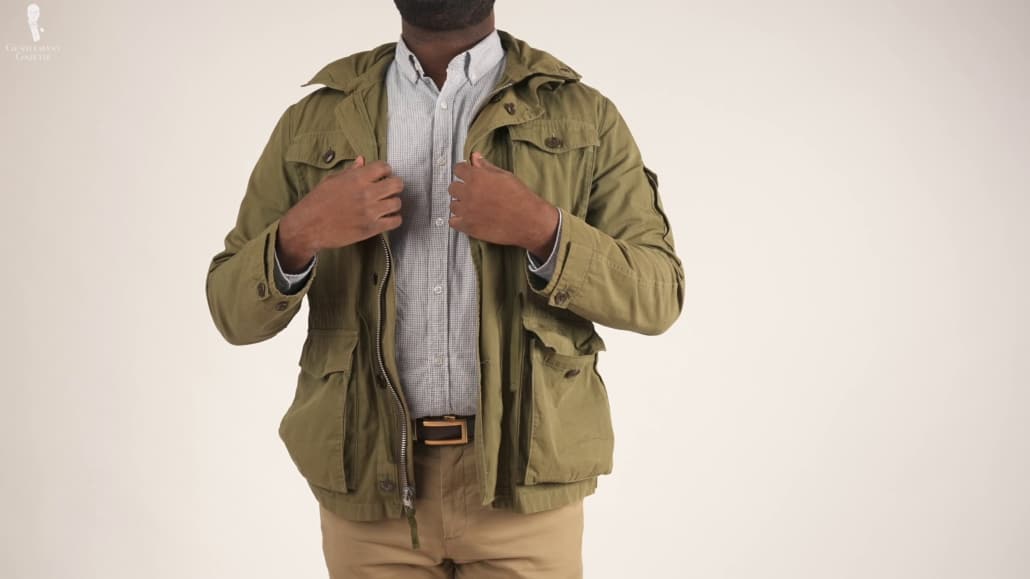


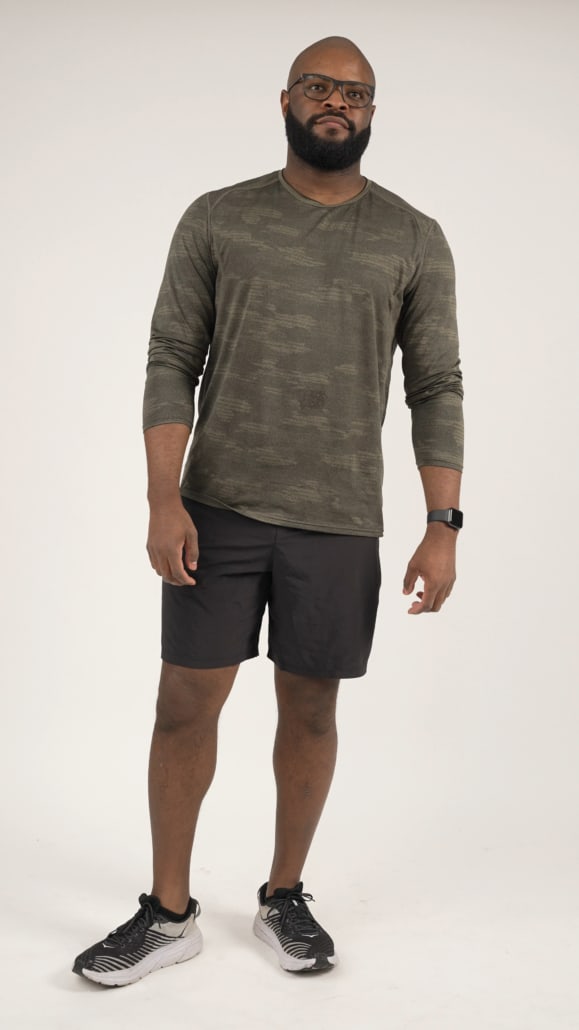
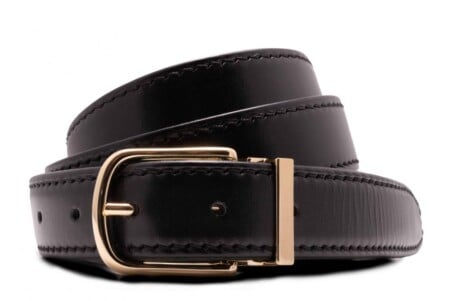
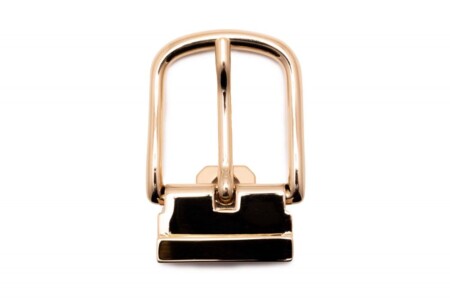
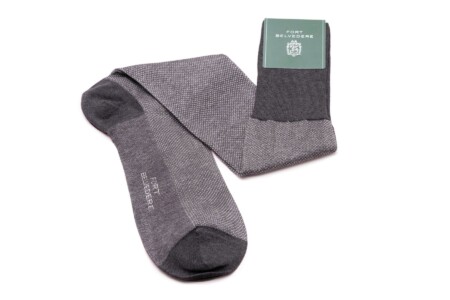
No. Absolutely not. Even the MILITARY’S non-combat uniforms are devoid of camo, so that should tell you something. As with jeans and cargo pants/shorts, there is a time and place for camo, but not with “Classic Menswear”. Even a pocket square in camo is pushing it, and that would be the only place where one could conceivably try to squeeze it in, and only if the rest of the ensemble were a good fit (such as rugged khakis, rugged sport coat, chukkas, etc).
Thank you so much for this article. I was already thinking about whether this question would ever be adressed on this site, and here you are with a very concise and informative take on camo.
As a combat veteran I appreciate your point #3. It’s very good advice. Thank you for that.
The only camo accessory I wear is a nice pair of Martin Dingman loafers with a subtle camo print. They go very well with khakis and a solid color shirt or jacket.
In my opinion unless going hunting leave camouflage to military personnel. #3 might also land you in hotter water by misleading uncouth civilians, in addition to being grossly disrespectful to the true owner of the insignia.
Camo also goes with baseball! The San Diego Padres were the first MLB team to wear camouflage jerseys in 2000, and they continue to wear them, as well as matching caps on Military Appreciation Days (Sunday home games and some holidays).
Not surprising since SD is a big military town.
I acquired the only G.I. garment I still wear while stationed there in 1970. I traded my USMC field jacket to a sailor for his USN peacoat. I got the better part of that bargain! It’s unlikely the field jacket would have survived this long, much less be perfectly serviceable…and timelessly stylish….as the peacoat is to this day.
Gentlemen save it for the duck blind or turkey hunting…
JL
I agree with “Jim Laursen” keep it for hunting season as in going to, at, or leaving for the day’s hunt unless you are at a hunting lodge! Wearing camo any place else? Is just plain out of place, or trying to say “i am cool, look at me” Yes, i will look at you, but laugh to myself for seeing the “obvious” for what you are trying to do and say!
Very glad you covered #3 as well. Things have improved dramatically on the stolen valor front. After Vietnam fatigues were regularly sold at surplus stores as they were complete with name tapes, jump wings and CIB’s. As for the underlying camo, I don’t think it can rise to much beyond casual or outdoor work. I’ll sometimes pair 7 pocket tiger stripe fatigue pants with a polo shirt or solid button down, usually blue. But it really only works as a function of casual summer setting. A shirt similarly matched with jeans or khakis doesn’t really look right to my eye at least.
One also has to look carefully at the newer digitized camo patterns. When they first came out, some of them (like the MARPAT) had tiny eagle/globe/anchor logos in the pattern. The folks that have earned the right to wear that logo are a bit territorial about who wears it. Not sure if any of the other ones have branch logos in them, or if generic versions are in circulation that don’t have them, but it’s something to look out for.
And as others have also pointed out, camo belongs in the woods. Period.
Camo is now associated with the radical right in the U.S. It indicates a desire of those wearing it to overthrow democracy and institute fascism. I have not and will not purchase nor wear camo under any circumstances.
The problem with camo is if it’s any good, you can’t find it anywhere.
Lol, that was my joke, I bough a nice jacket from Todd Snyder that was camo. Someone complimented me on it, I quiped “Oh, I’m surprised you can see it” (ba-dump)
I like it though, kind of dressy casual, wear it with earth colors, a green cap I bought at a national park, and yeah, a bit of an attitude I suppose, wear it in urban situations, wouldn’t wear it around folks that actually hunt and fish, and I’m pretty comfortable outdoors, hike and bike and camp guy.
Have to agree with some of the other folks here. I only where it for hunting or birdwatching. I suppose wildlife photography might be another time to wear camo.
It also depends on the man’s age. Teens and early to mid-20s it’s expected that one is more experimental; as long as you own it, you can get away with a lot of loud or bright colours and trends (including weird ass fit clothes) one would look plain weird in or if one were a woman (I haven’t heard this phrase used in association with men) mutton dressed as lamb. As much as one tries to encourage younger male relatives (whether sons, nephews or grandsons) to adopt a more refined or classic dress style, it’s seemingly more appropriate for younger men to wear cammo as casual wear. To prove my point, I’ll show you some examples from this website (I use it for creative writing to help visualise characters in different outfits) of outfits in cammo intended for different age groups:
Teens and 20s
https://lookastic.com/men/camouflage-cargo-pants/looks/teen-fashion
https://lookastic.com/men/camouflage-cargo-pants/looks/20-year-old-fashion
https://lookastic.com/men/camouflage-shorts/looks/20-year-old-fashion
To me the above look more age appropriate than the ones for mature age men. Some of the latter make me cringe just looking at them:
https://lookastic.com/men/camouflage-cargo-pants/looks/fashion-over-40
https://lookastic.com/men/camouflage-cargo-pants/looks/fashion-over-50
https://lookastic.com/men/camouflage-shorts/looks/fashion-over-60
Hi Kyle – What is the brand of the short sleeve camo print shirt that you wore in the video? I like the buttons on the long sleeve shirt since they don’t jump out at you like the white buttons on the short sleeve shirt. I feel that this is a detail that most manufacturers overlook.
I enjoyed the video.
Great Article !! i wouldadd the trenchcoat, quintessential military men’s coat sent directly from the WWI trenches to the streets of London and the world, courtesy of Burberry.Will try to add some camo to my casual wear, besides the Navy peacoat i already use as an overcoat while wearing suits and my Brown leather Air Force Bomber jacket (minus the sheepskin).
Thanks and keep up the great work
TX
Hi Tomas Xavier,
Trench coats, while originating with the military, can come in an assortment of colours similarly to the pea coat (although it is more commonly navy blue as befitting its origins) so not everyone necessarily associates them with the military the way one would camouflage. For those reasons they can be regarded as having a place in classic men’s wear. Given the nature of its pattern(s) and even the colours camouflage comes in, it’s seen as very loud and casual even a bit of a fad thing rather than something that has a place in classic menswear.
Hard to find anything more classic or manly than the tan trench coat. Here’s lookin’ at you, kid.
Another great article. I still like the occasional camo garment for very casual wear. Just a point of clarification, distinctively colored uniforms – red, white, green, etc. had a very practical purpose in the days before smokeless powder. Battlefields would be covered in smoke and distinctive coloring allowed soldiers (and sailors) to maintain and rejoin ranks, as well as identify friends or foes.
Forgive me, but there’s so much incorrect historical information in this article that I’m not sure where to begin. If you want to make the case for the wearing of camo patterns in modern style, by all means do so. Just make sure you’ve got your facts straight.